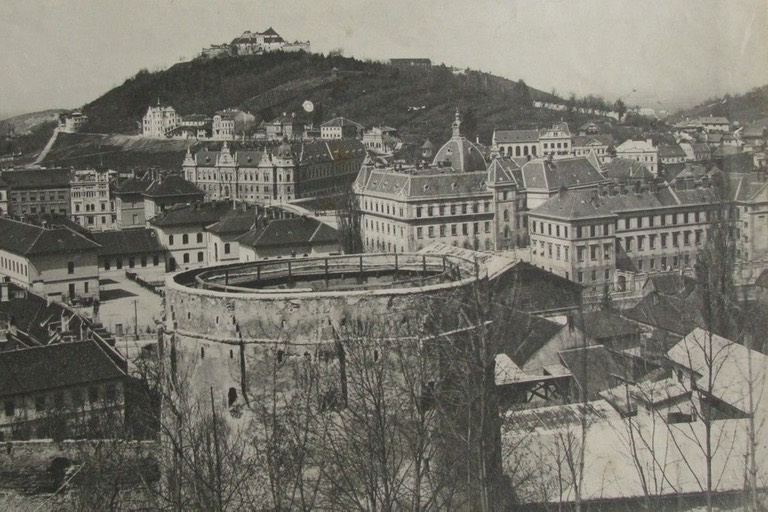Behind the old walls of the city, lies The Graft Bastion.
The Graft bastion was built in the period 1515-1521 to ensure communication from the white tower with the fortress. To that end it had a gate, rectangular in shape, having a thickness of about 4 meters provided with holes for shooting.
The last restoration was carried out in the 2003-2004.
Today there are temporary exhibitions and workshops organized in this open place.
Bastionul Țesătorilor
From 1908, the bastion is used increasingly more, for cultural activities, thanks to the thrilling acoustic qualities, here were organized even opera concerts.
Inside the walls are three galleries on four floors. In 1800 there are build two rooms for celebrations and in 1807 the bastion lost its defensive function and the little house in front of the entrance. From 1908, the bastion is used increasingly more, for cultural activities, thanks to the thrilling acoustic qualities, here were even held opera concerts. In 1950 it becomes Museum.
The Black Church
For over 500 years, the black church is the most representative monument of the city, the largest Gothic church in Transylvania and, according to some historians, the world’s largest religious edifice between Vienna and Istanbul. Moreover, inside is one of the largest organs in Europe and the largest collection of old carpets from Small Asia.
The Ethnography Museum Brasov
Museum of Ethnography in Brasov holds a collection of over 21 000 parts that keeps the heritage left by of rural communities. The museum is a treasure for our cultural heritage. The collection is a manifestation of popular art from the 17th and 20th centuries. There are elements of the popular art, illustrated in the pottery, glassware, painted eggs, bones and skin also painted, icons on glass. The museum is open to suggestions making everything interactive thanks to there amazing guides, the audience experiment various activities and workshops to participate especially young pupils. A place that makes the history story told with popular port sends you back in time.
The Art Museum Brasov
The Art Museum in Brasov was founded in 1949 as the Regional Department of the Museum. In 1950 has functioned in the building of the Central House in The Square and from March 1970 establishes its current location on the Avenue of Heroes. High building, made in the neobaroc style, dating from 1902 and the architect was Moritz Wagner.
The independence of the institution, the Art Museum is formed on 1 June 1990.
Named after Johannes Honterus (1498-1549), which was born and lived in this place, the memorial house lives today. Author of school textbooks, history manuscripts and geographical atlases, Johannes Honterus would be one of the most important figures of Brasov.
The first map of Transylvania, the bases of the printer from Brasov, the reorganization of the German language school in town, the first paper mill in Romania and a library of the school. There are only a few of the achievements of this man who become a great Humanist.

